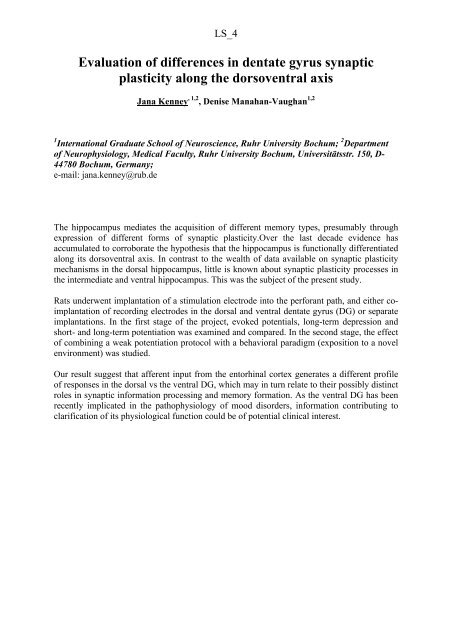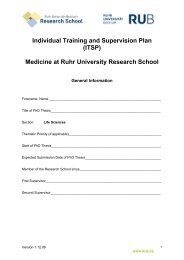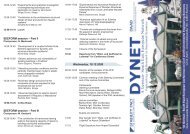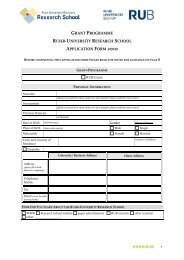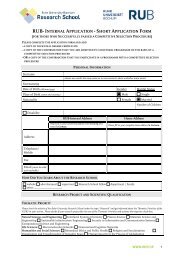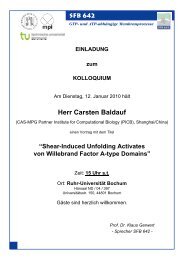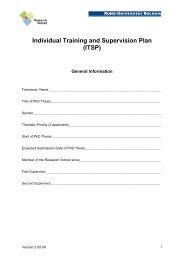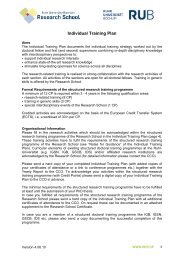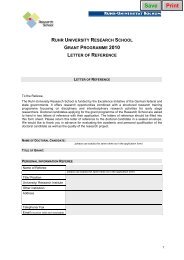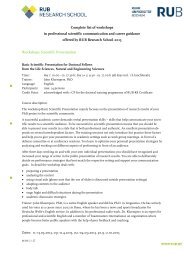Section Days abstract book 2010.indd - RUB Research School ...
Section Days abstract book 2010.indd - RUB Research School ...
Section Days abstract book 2010.indd - RUB Research School ...
Create successful ePaper yourself
Turn your PDF publications into a flip-book with our unique Google optimized e-Paper software.
LS_4<br />
Evaluation of differences in dentate gyrus synaptic<br />
plasticity along the dorsoventral axis<br />
Jana Kenney , 1,2 , Denise Manahan-Vaughan 1,2<br />
1 International Graduate <strong>School</strong> of Neuroscience, Ruhr University Bochum; 2 Department<br />
of Neurophysiology, Medical Faculty, Ruhr University Bochum, Universitätsstr. 150, D-<br />
44780 Bochum, Germany;<br />
e-mail: jana.kenney@rub.de<br />
The hippocampus mediates the acquisition of different memory types, presumably through<br />
expression of different forms of synaptic plasticity.Over the last decade evidence has<br />
accumulated to corroborate the hypothesis that the hippocampus is functionally differentiated<br />
along its dorsoventral axis. In contrast to the wealth of data available on synaptic plasticity<br />
mechanisms in the dorsal hippocampus, little is known about synaptic plasticity processes in<br />
the intermediate and ventral hippocampus. This was the subject of the present study.<br />
Rats underwent implantation of a stimulation electrode into the perforant path, and either coimplantation<br />
of recording electrodes in the dorsal and ventral dentate gyrus (DG) or separate<br />
implantations. In the first stage of the project, evoked potentials, long-term depression and<br />
short- and long-term potentiation was examined and compared. In the second stage, the effect<br />
of combining a weak potentiation protocol with a behavioral paradigm (exposition to a novel<br />
environment) was studied.<br />
Our result suggest that afferent input from the entorhinal cortex generates a different profile<br />
of responses in the dorsal vs the ventral DG, which may in turn relate to their possibly distinct<br />
roles in synaptic information processing and memory formation. As the ventral DG has been<br />
recently implicated in the pathophysiology of mood disorders, information contributing to<br />
clarification of its physiological function could be of potential clinical interest.


